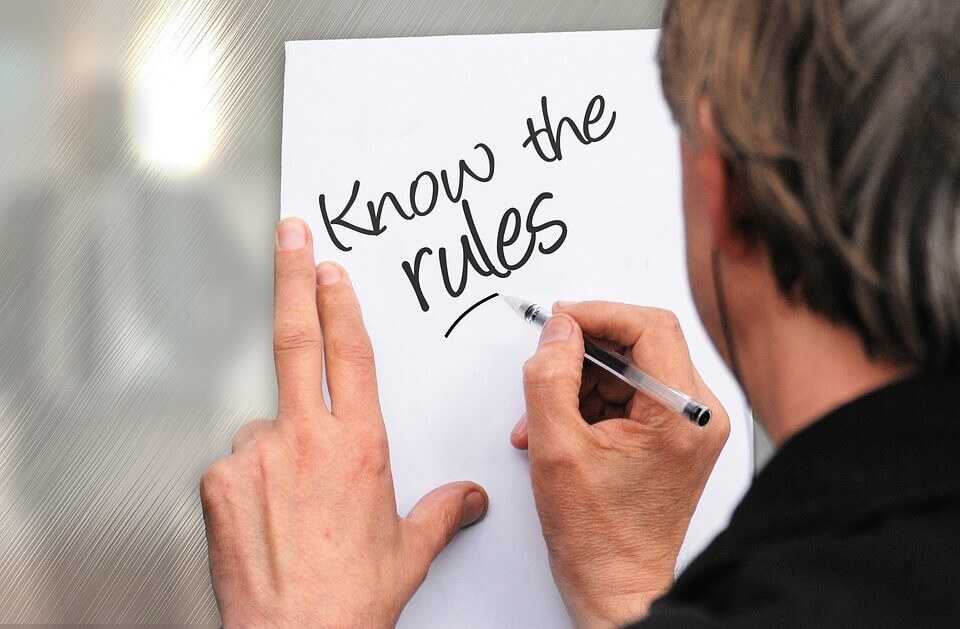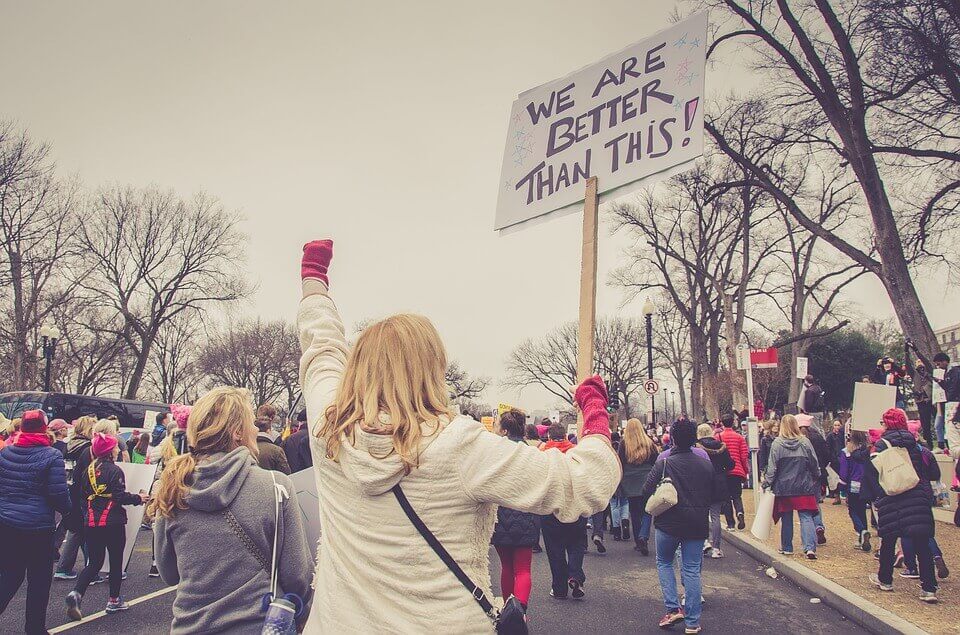Group Psychology


Written and verified by the psychologist Sergio De Dios González
If you were to look back over the last month, you’d probably discover that you took part in a number of groups. Family, friends, colleagues, a sports team, a theater company, etc. At the same time, you’re also a member of other larger groups that you may or may not have remembered to include in this list.
According to social categories, we might be men or women, members of certain religious denominations, or ethnic groups. As a result, we have different group identities. Sometimes, we interact as members of one group and not another. The science that studies these processes is group psychology.
Group psychology is a subdiscipline within the field of social psychology whose main object of study is the group. This discipline analyzes the influence that groups have on individual behavior. Moreover, it studies the influence that an individual has on changing group behavior.
Group psychology studies what groups are, how, when, and where they’re created, their configuration, and the types of roles and relationships established between their members or with other groups.

The definition of a group
Defining a group isn’t easy. In fact, throughout history, multiple definitions have been given (Huici, 2012a). Among them, we can distinguish two types of definitions, categorical and dynamic.
According to the categorical definition (Wilder and Simon, 1998), a group is defined by shared characteristics. The members of a group have specific shared characteristics, so the group is the sum of the members that share those characteristics. However, the group only exists in the minds of individuals and contributes a particular vision of the world.
On the other hand, the dynamic definition (Wilder and Simon, 1998) proposes that groups arise from the relationship between their members and from the interaction between them. This interaction can cause new features to emerge so that the group is more than the sum of its members.
Due to the above, it’s not possible to infer the characteristics of a group from the characteristics of a single member, since the groups that arise from the interaction are easier to distinguish than the categorical groups.

Why and for what are groups formed?
According to Cartwright and Zander (1992), three types of circumstances can be distinguished that make individuals come together to form a group.
1. To achieve a goal
The individuals who decide to create a group under this circumstance recognize that, through it, they’ll achieve certain purposes that wouldn’t be possible without its existence. However, this judgment doesn’t have to be correct for the group to be formed.
2. To satisfy a need
In these cases, grouping is usually spontaneous. They’re usually informal groups within organizations, social clubs, or youth gangs. Their formation is based on voluntary interpersonal choices.
Some determinants of this type of election are the perceived similarity in people, complementarity, reciprocity, proximity, or the positive balance between the advantages and disadvantages of belonging to the group.
3. To receive homogeneous treatment
In this case, a social categorization process is carried out. It consists of classifying people into groups based on a specific shared characteristic.
These individuals consider themselves to be members of that group. Consequently, their behavior and that of others toward them will be determined by the externally designated group membership.
It’s not necessary for individuals to interact with each other to be members of this type of group. Indeed, they often don’t even know each other.
Types of groups
Groups are structured in different ways. The structure provides stability when it comes to organizing and relating to group members (Cartwright and Zander, 1992). This structure also serves to differentiate as a group. In other words, to be different from other groups. The structure of the group makes the group remain and not disperse. According to Scott and Scott (1981), groups are characterized by three structural properties:
- Groups are defined by the relationship between members. For instance, a workgroup can be defined by the unequal relationship between the boss and the workers.
- The group must have structural continuity over time. For example, in a soccer team, there’ll always be defenders, forwards, and goalkeepers.
- The members of the group are replaceable. Any member can be replaced by another person.
These structures assign roles to group members. Each role is assigned a different value. Some members are more important than others. This means that each member’s status is different.
There’s a hierarchy within the group defined by the status of each member. Differences in status imply patterns of prestige, deference, and submission in the members of the groups (Blanco and Fernández Ríos, 1985), as well as the existence of a consensus regarding the hierarchical order and the prestige granted.
Group rules
Within the structure of a group are also the norms. In fact, every group has a common frame of reference, and members share ideas about what should and shouldn’t be done. Norms regulate the attitudes and behaviors of group members (Sherif, 1936). These norms can be of two types: descriptive and prescriptive (Cialdini, Kallgreen, and Reno, 1991).
Descriptive norms correspond to what members do in a specific situation. On these occasions, when members don’t know how to behave, what the higher-status members or the majority do becomes the dominant norm.
On the other hand, prescriptive norms indicate what can and can’t be done. They’re moral norms that indicate to group members what’s right and wrong. These norms react to behavior with rewards and punishments. They reward those who behave well and punish those who don’t follow the rules.

Roles of group members
The role that each member plays in a group is associated with their position in the group (status) and the rights and duties toward one or more members (Hare, 1994). Each role is associated with behavior patterns within the group. The roles divide the tasks of the members and each member has to perform different functions (Scott and Scott, 1981).
The differentiation of roles serves so that the group’s objectives can be achieved. Also, to order and predict the functioning of the group so that the members of the group define themselves within the group itself (Brown, 2000).
Some classic roles are (Benne and Sheats, 1948) task roles, maintenance roles, and individual roles. Among the task roles, the coordinator, the evaluated, the counselor, and the initiator stand out. Among the roles of maintenance are those who seek commitment, those who encourage, the followers, the observers, etc. Finally, some of the individual roles of the members of a group are the aggressor, the blocker, the recognition seeker, and the dominant.
Usage of group psychology
Group psychology studies various fields such as leadership (Molero, 2012a), formation and development of groups (Gaviria, 2012), group cohesion (Molero, 2012b), influence processes in the group (Falomir- Pichastor, 2012), productivity (Gómez, 2012), decision processes (Huici, 2012b), and intergroup relations (Huici and Gómez Berrocal, 2012). While all are important, intergroup relations has been one of the fields with the most impact.
Intergroup relations are nothing more than relations between different groups and between members of different groups. In the media, we see and read news about racist incidents, coexistence between religions, meetings between companies and unions, etc. All of them talk about intergroup relations.
When it comes to explaining what these behaviors are due to, there are two main types of explanations: those that appeal to the differences between individuals -based on certain characteristics, orientations, or personality traits- and those that directly focus on intergroup processes.

Individual approaches
Two components stand out in the individual approaches. On the one hand, right-wing authoritarianism assumes that there are differences between individuals in terms of the tendency to submit to the dictates of authority. Authoritarians firmly believe in this idea. They also fully abide by the norms that the authority supports. Likewise, they oppose those whom the authority attacks. This personality develops in adolescence and is based on earlier learning of obedience, conventionality, and aggression (Altemeyer, 1998).
Although it’s called right-wing authoritarianism, it isn’t related to politics. Neither one political orientation or another dicates whether an individual is more authoritarian. Indeed, there are people with political orientations both from the right and from the left who have a right-wing authoritarian personality.
From the orientation of social dominance, attention is paid to hierarchical relations between groups within the social structure and to the existence within a society of ideologies that favor or try to reduce hierarchical inequalities (Sidanius and Pratto 1999).
The existence of individual differences in terms of the tendency to legitimize inequalities and divisions in society is assumed. Some people will support the existence of a hierarchy while others won’t.

Intergroup approaches
This approach rejects the temptation to reduce the explanation of behavior to individual characteristics. It proposes that the way in which the individual is transformed and begins to think, act and treat others is related to belonging to certain groups and not to others. As a consequence, their behaviors and perceptions tend to become standardized.
All members of the group begin to think alike. There are two major theories that attempt to explain this phenomenon. There’s the theory of realistic group conflict and the perspective of social identity.
The theory of realistic group conflict
Functional relationships are affected by the reciprocal goals and interests of groups. They focus on cooperative or competitive relationships to achieve goals or resources, that is, on cooperative or competitive interdependence.
Intergroup conflict (Sherif and Sherif, 1979) is caused by the existence of incompatible goals and gives rise to intergroup hostility and discrimination. When two groups want the same thing, they have two possibilities for achieving it: to compete or to cooperate.
The social identity perspective
This includes two theories, social identity theory and self-categorization theory (Turner & Reynolds, 2001). Both emphasize the processes of identification with the group, the transformation from individual to collective psychology, and the idea that intergroup relations arise from the interaction between psychological processes and social reality.
Social identity theory focuses on intergroup processes. Self-categorization theory broadens its scope to include the explanation of intragroup processes of group formation, cohesion, influence, and polarization.
To simplify the world and understand it better, we use categorization. In the same way, we also categorize other people within social groups, while becoming aware of the categories to which we belong. The consequence is that we create a psychological belonging to some groups, while we classify others into two broad categories: members of our group and members of other groups.
By belonging to these social groups, our social identities emerge (Tajfel, 1981; Tajfel & Turner, 2005), one per group, with which we identify to a greater or lesser degree. The importance of each identity means that, at different times, our thoughts, feelings, and behaviors are, to a greater or lesser extent, influenced by our social identities. Hence, for example, we favor our own groups to the detriment of other groups.
Why do group members do what they wouldn’t do alone?
When people are in a group, on many occasions, they carry out behaviors that they wouldn’t do when alone. This is more frequently observed in groups with violent or inappropriate behavior. Drunken tourism is one clear example as well as the violence of some fans at football matches. But, what’s hidden behind this process? The key lies in the deindividuation process.
Moral, Canto, and Gómez-Jacinto (2004) from the University of Málaga (Spain) claim that “anonymity, the group, and reduced individual self-awareness would lead people to have uninhibited, impulsive and anti-normative behaviors. This process is based on two key aspects: anonymity and the reduction of individual self-awareness”.
Most people, when they’re on their own wouldn’t throw a soda can on the sidewalk. They know it’s unacceptable. Even someone who hasn’t been taught to respect the environment and tends to throw their waste on the ground, won’t do it if someone is watching them. That’s because of their sense of self-awareness. In effect, they don’t want others to know that they’re the one who made the mess.
Anonymity
However, in a group, their anonymity is greater and their individual self-awareness dissolves. It could be defined as their own personal responsibility being transferred to the group. After all, if they throw a can on the ground no one will know it’s them. Besides, they’re in a group and the responsibility lies more with the group than them. These are the kinds of thoughts that cross the minds of many people. Especially when someone in the group starts behaving inappropriately.
To conclude, group psychology is the branch of social psychology that studies the dynamics between different types of groups of individuals. Thanks to this discipline, human behavior in society is understood in a profound way.
All cited sources were thoroughly reviewed by our team to ensure their quality, reliability, currency, and validity. The bibliography of this article was considered reliable and of academic or scientific accuracy.
- Altemeyer, B. (1998). The other Authoritarian Personality. In M. Zanna (ed.), Advances in Experimental Social Psychology (vol. 30, 47-92). Orlando, FL: Academic Press.
- Benne, K. D., y Sheats, P. (1948). Functional roles of group members. Journal of Social Issues, 4, 41-49.
- Blanco, A., y Fernández Ríos, M. (1985). Estructura grupal: Estatus y roles. En C. Huici (Dir), Estructura y Procesos de grupo (pp. 367-396). Madrid: UNED.
- Brown, R. (2000). Group processes. Oxford: Blackwell Publishers.
- Cartwright, D., y Zander, A. (1992). Dinámica de grupos: Investigación y teoría. México: Trillas.
- Cialdini, R. B.; Kallgreen, C. A., y Reno, R. R. (1991). A focus theory of normative conduct: A theoretical refinement and the reevaluation of the role of norms in human behavior. Advances in Experimental Social Psychology, 21, 201-224.
- Falomir-Pichastor, J. M. (2012). Procesos de influencia en grupo. En C. Huici, F. Molero Alonso, A. Gómez y J. F. Morales (Eds.), Psicología de los grupos (pp. 283-330). Madrid: UNED.
- Gaviria, E. (2012). Formación y desarrollo de los grupos. En C. Huici, F. Molero Alonso, A. Gómez y J. F. Morales (Eds.), Psicología de los grupos (pp. 211-250). Madrid: UNED.
- Hare, A. P. (1994). Types of roles in small groups. A bit of history and a current perspective. Small Group Research, 25, 433-448.
- Huici, C. (2012a). Estudio de los grupos en psicología social. En C. Huici, F. Molero Alonso, A. Gómez y J. F. Morales (Eds.), Psicología de los grupos (pp. 35-72). Madrid: UNED.
- Huici, C. (2012b). Los procesos de decisión en grupos. En C. Huici, F. Molero Alonso, A. Gómez y J. F. Morales (Eds.), Psicología de los grupos (pp. 373-426). Madrid: UNED.
- Huici, C. y Gómez Berrocal, C. (2012). Las relaciones intergrupales. En C. Huici, F. Molero Alonso, A. Gómez y J. F. Morales (Eds.), Psicología de los grupos (pp. 427-480). Madrid: UNED.
- Molero, (2012a). El liderazgo. En C. Huici, F. Molero Alonso, A. Gómez y J. F. Morales (Eds.), Psicología de los grupos (pp. 173-210). Madrid: UNED.
- Molero, (2012b). Cohesión grupal. En C. Huici, F. Molero Alonso, A. Gómez y J. F. Morales (Eds.), Psicología de los grupos (pp. 251-282). Madrid: UNED.
- Scott, W. A., y Scott, R. (1981). Intercorrelations among structural properties of primary groups. Journal of Personality and Social Psychology, 41, 279-92.
- Sherif, M., y Sherif, C. (1979). Research on intergroup relations. En W. G. Austin y S. Worchel (Eds.), The social psychology of intergroup relations (pp. 7-18). Monterrey CA: Brooks/Cole.
- Sidanius, J., y Pratto, F. (1999). The dynamics of social dominance and the inevitability of oppression. En P. Sniderman & P. E. Tetlock (Eds.), Prejudice, politics and race in America today (pp. 173-211). Standford, CA. Stanford University Press.
- Tajfel, H. (1981). Human groups and social categories. Cambridge: Cambridge University Press.
- Tajfel, H., & Turner, J. C. (2005). An integrative theory of intergroup contact. En W. G. Austin & S. Worchel (Eds.), The social psychology of intergroup relations (Vol. 33, pp. 34-47). Chicago: Nelson-Hall.
- Turner, J. C., y Reynolds K. J., (2001). The social identity perspective in intergroup relations: Theories, themes and controversies. En R. Brown y S. Gaertner (eds.), Blackwell handbook of social psychology. Intergroup Processes (pp. 133-152). Oxford: Blackwell Publishing Co.
- Wilder, D. A., y Simon, A. F. (1998).Categorial and dynamic groups: Implications for social perception and intergroup behavior. En C. Sedikides, J. Schopler, y C. A. Insko (eds.), Intergroup cognition and intergroup behavior (pp. 27-44). Mahawh, NJ: Lawrence Erlbaum.
- Zárate Ortiz, J. F. (2015). La identidad como construcción social desde la propuesta de Charles Taylor. eidos, (23), 117-134.
This text is provided for informational purposes only and does not replace consultation with a professional. If in doubt, consult your specialist.








